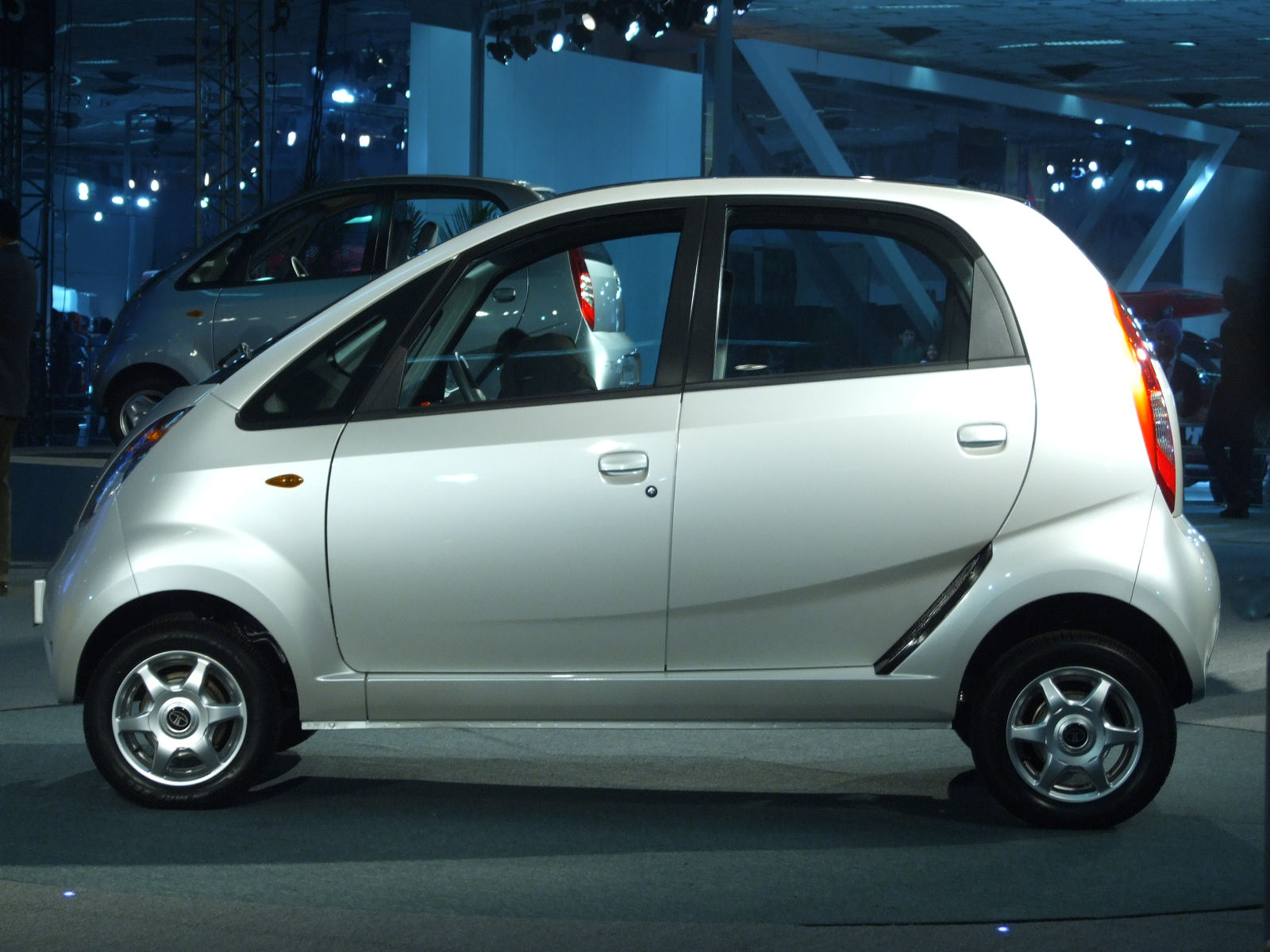From Innovations, a website published by Ziff-Davis Enterprise from mid-2006 to mid-2009. Reprinted by permission.
On a visit to Compaq Computer (remember them?) several years ago, an executive told me proudly that Compaq had reinvented itself to avoid becoming what he referred to as “the Mercedes of PCs;” in other words, the luxury supplier in a market that was increasingly demanding low cost and high volume.
It turned out that Compaq succumbed to cheaper competition, anyway. It quality-at-all-costs culture couldn’t successfully accommodate the “good enough” demands of the emerging market.
This story came to mind this week as I noted the impending launch of the Tata Nano (below), a new low-cost automobile being introduced next month by India’s giant industrial conglomerate Tata Group. Priced at just $2,500, the Nano is a marvel of simplicity. At a time when the cheapest American car costs nearly $11,000, it’s a bid to rewrite the economics of the global auto industry in an effort to reach a giant emerging class of consumers.
 The Nano is remarkable not for its technological sophistication but for what designers chose to leave out. For example, the base model has no air conditioning, power brakes or radio. Even its steering column is constructed of hollowed-out steel to save money on materials and reduce weight. It has a top speed of just 65 mph from its tiny rear-mounted engine.
The Nano is remarkable not for its technological sophistication but for what designers chose to leave out. For example, the base model has no air conditioning, power brakes or radio. Even its steering column is constructed of hollowed-out steel to save money on materials and reduce weight. It has a top speed of just 65 mph from its tiny rear-mounted engine.
Tata made these trade-offs in order to accommodate other needs that it believes are more important to its audience. Specifically, the Nano can accommodate four passengers while putting around at 50 miles per gallon. It meets all Indian emission, pollution and safety standards, although admittedly those are looser than in the US. It’s also designed for modular assembly, meaning that local entrepreneurs can add value by swapping in their own components for those provided by the manufacturer. From its lowest-cost perch, it can easily be scaled up without sacrificing its compelling price advantage.
An Open Source Automobile
The Nano may be the world’s first open-source car. Tata intentionally chose to design the vehicle around modular components and to single-source most of those parts in order to keep costs down. Modularity also creates an opportunity for innovation in manufacturing, for the Nano is designed to be assembled in small quantities. Entrepreneurs can set up boutique assembly shops to build the vehicles profitably in small quantities for their local markets. They can plug in the components that their customers value most and still retain significant cost advantage.
This kind of innovation goes against the grain of most American thinking. In our technology-driven culture, we are wedded to the principle that sophistication and elegance define innovation. We celebrate product over process and take pride in the number of patents our companies earn.
In contrast to Tata’s bare minimalist approach, American automakers have increasingly been outfitting their vehicles with navigation systems, video entertainment and computerized wizardry encoded in proprietary black-box designs. A high-end DVD entertainment system in an American car costs more than an entire Nano. While there’s no question that these high-tech products are innovative, but they serve a narrow slice of the luxury market that is already saturated with choice.
Tata, in contrast, is focused on volume. It expects to sell over one million Nanos in the first year and to ramp up steeply from there. It’s targeting the 98 out of every 100 Indians who don’t own a car. In contrast, the U.S. has 76 vehicles for every 100 citizens.
There’s a lesson here for tech professionals. As I’ve noted before on this blog, disruptive market change almost always comes from below. In computers, consumer electronics, software and even retailing, low-cost providers who unlock new markets invariably displace high-margin boutique businesses at the high end.
Tata is targeting the hundreds of millions of consumers who will constitute the middle class of the future. These people have never owned a car and have no affinity to a brand. Most have also never owned computers, luxury electronics or online bank accounts. They are a green field of opportunity for companies that can meet their need for affordability and convenience. While Tata will no doubt face skeptics and setbacks, it has defined a clear vision and built a company around it.
Is your company positioned to meet this opportunity? Or is it destined to become the Mercedes of your market? Comment below and tell me if you think low-cost markets are an important opportunity to you.
